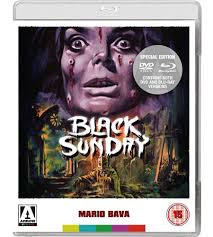Of the few interesting films that did slip by relatively unscathed, many were European, and therefore, reasoned the censors, unlikely to impinge on the unpolluted minds of Australian youth. They often surfaced at such grind houses as Sydney’s Capitol. Situated in the middle of Chinatown, the Capitol, since refurbished as a venue for live shows, still clung to shreds of its twenties glory, including a sky blue ceiling with actual clouds, which had at one time moved, though were now rusted up.
Most Saturdays, I caught the new programme there, but only after visiting the restaurant opposite and purchasing some spring rolls and slices ofspiced roast pork. Locating a seat where the springs hadn’t worked their way through the balding plush, I’d settle down for whatever double bill the management had chosen that week. “Chosen” is probably being generous. The jumble of dubbed and mutilated Franco-Italian co-productions could include a political docu-drama like The Bandit’s Revenge, alias Francesco Rosi’s Salvatore Giuliano, or Valerio Zurlini’s The Girl With the Suitcase, featuring a young actress whose identity I took the trouble to note as the final credits rolled. Thereafter, I would always associate Claudia Cardinale with the taste ofchar siu.
Occasionally the Capitol screened something that had begun as a horror film but was now little more than a succession of spooky decors in which various bad actors recoiled from frightful sights we were forbidden to see. Among the credits of these films, certain names recurred. One was Mario Bava. Once I reached Europe, I made a point of hunting down one film in particular which I knew only from stills in such magazines as Midi-Minuit Fantastique.Variously called La Maschera del Demonio, Mask of the Demon, Black Sunday, The Mask of Satan and Revenge of the Vampire, it did not disappoint.
It begins in 17thcentury Moldavia, with a young sorceress of haunting beauty railing defiantly at the usual mob of torch-carrying moralists. As she curses them all, a metal mask studded inside with spikes is placed over her face and a brute with a huge mallet slams it home. Ouch.
 |
| Mario Bava (right) |
Few of Bava’s subsequent films open so auspiciously, but, equally, none was less than interesting. He began as a cinematographer, as his father had been. I learned this from Barbara Steele, who played the witch in La Maschera del Demonio.It helped explain the visual intelligence evident in his work.
 |
| Barbara Steele, La Maschera del Demonio |
(I met Steele at the home of director Curtis Harrington, himself a practitioner of the creepy craft: eg. How Awful About Allan, What’s the Matter with Helen?, Who Slew Auntie Roo? At the same dinner, the actor Paul Sand told Steele “I was staying in Rome a few years ago. My friend told me you lived in the apartment building next door and sometimes sunbathed on the roof. We went out with some binoculars and there you were – wrapped up in something large and brown, as I remember.”
With faultless timing, she replied huskily “A man, I hope, dahling.”)
I finally got to meet Bava in the early seventies. Unexpectedly for the director of The Torture Chamber of Baron Blood, Planet of the Vampires, An Axe for the Honeymoon and The Whip and the Flesh (a film its star, Christopher Lee, was reluctant to discuss) he lived like a banker in a penumbrous 18thcentury Roman apartment hung with tapestries. Ticking from his collection of antique watches provided a solemn obbligato to our chat.
Once he decided I was not another fanatic eager to kiss the hem of his garment, he was a fount of insider lore on film technique, particularly about ways of stretching budgets. A morocco case, inherited from his father, contained a piece of rippled glass with which, he explained, he created the effect of a dissolve without expensive opticals. A 20cm cardboard cut-out of a galley was the Argo from Ulysses. It showed how images he snipped from a magazine could stand in for the arches of a Gothic chapel in La Maschera del Demonio.
Listening to him discourse on his craft, it was hard to square this portly gentleman with the horrors of his films. He didn’t seem the type.
Oh, but he was, he insisted. “When I sleep here alone, if my family is away, I put pieces of crumpled newspaper on the floor around my bed - to hear if anyone comes close.” He glanced round uneasily.
“I am,” he confessed, “a frightened man.”
 |
| Black Sunday, Brit Blu-ray cover |

No comments:
Post a Comment
Note: only a member of this blog may post a comment.